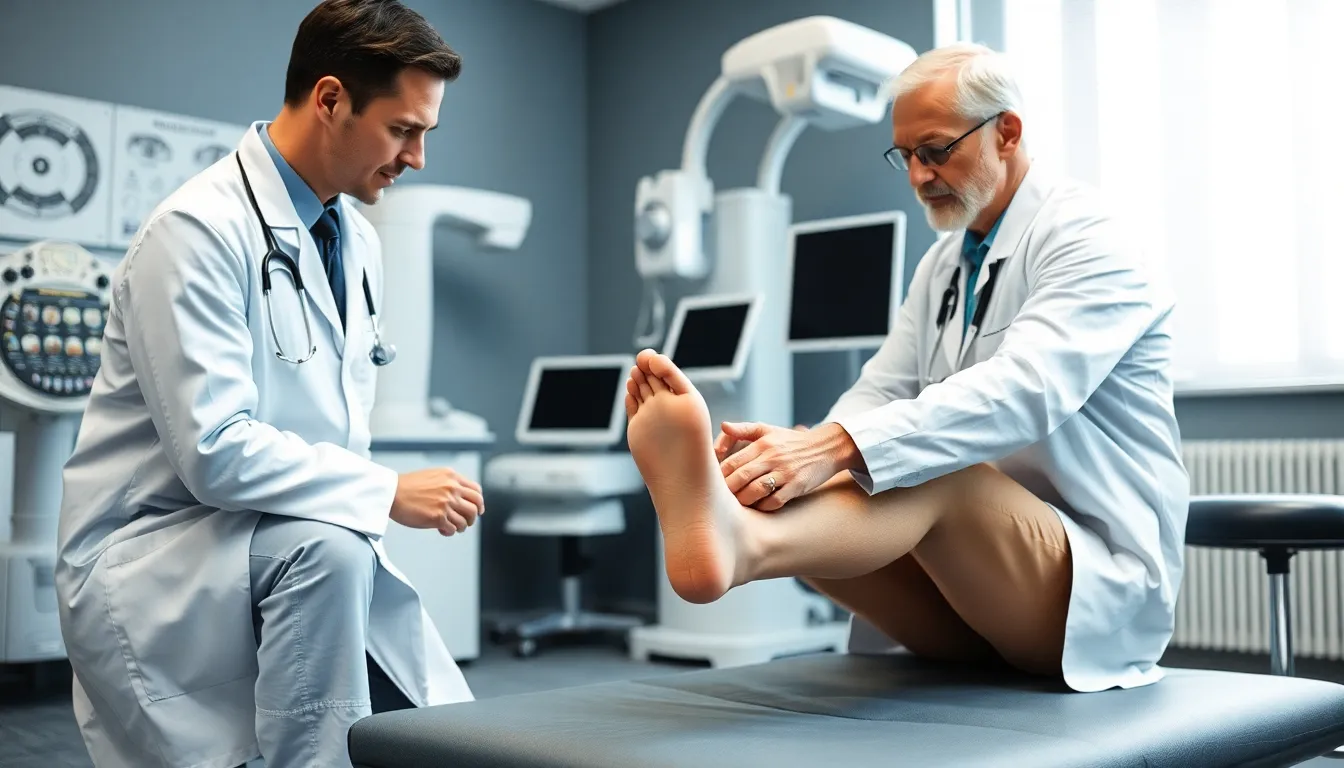Table of Contents
TogglePavatalgia disease might sound like a fancy dish on a menu, but it’s anything but appetizing. This quirky condition can leave individuals scratching their heads and their feet in discomfort. If you’ve ever felt a nagging pain that seems to dance around your lower extremities, you might just be in the right place.
Diagnosing pavatalgia isn’t as daunting as it sounds. With the right tools and a sprinkle of humor, anyone can become a sleuth in their own health journey. From understanding symptoms to navigating the maze of tests, this guide will help unravel the mystery behind those pesky pains. So grab a comfy chair and let’s dive into the world of pavatalgia diagnosis—because who knew diagnosing foot pain could be this entertaining?
Understanding Pavatalgia Disease
Pavatalgia disease leads to discomfort in the lower extremities. It’s essential to recognize its symptoms and underlying causes for effective diagnosis.
Symptoms of Pavatalgia Disease
Individuals with pavatalgia often experience pain or aching in the feet and legs. Many report tingling or numbness as well. Discomfort may worsen during extended periods of standing or walking. Some people notice swelling or stiffness in the affected areas too. Identifying these symptoms can guide individuals toward seeking further evaluation.
Common Causes of Pavatalgia Disease
Several factors contribute to pavatalgia. Excessive physical activity can trigger symptoms, as can improper footwear. Conditions like arthritis or tendinitis also play a role in the development of pavatalgia. Furthermore, nerve compression or injury may exacerbate the discomfort. Understanding these causes can support targeted diagnosis and effective treatment options.
Diagnostic Methods

Diagnosis of pavatalgia involves a thorough assessment of symptoms and several key diagnostic methods. Healthcare providers employ various methods to establish an accurate diagnosis.
Physical Examination Techniques
Doctors conduct physical examinations to evaluate the lower extremities. They closely observe foot and leg alignment, checking for any visible deformities. Palpation helps identify specific areas of tenderness. They also assess range of motion, determining any restrictions that may indicate underlying issues. Gait analysis reveals how a patient walks, providing insight into contributing factors. Overall, a comprehensive physical exam offers critical information for diagnosing pavatalgia.
Imaging Tests
Imaging tests play a significant role in diagnosing pavatalgia. X-rays frequently help visualize bone structure, identifying fractures or dislocations. MRI scans provide detailed images of soft tissues, including muscles, tendons, and ligaments, highlighting areas of inflammation or injury, while ultrasound can assess structural abnormalities. These tests assist healthcare professionals in understanding the root causes of discomfort, facilitating appropriate treatment plans. Each type of imaging contributes valuable information to the diagnostic process.
Lab Tests and Their Significance
Laboratory tests play a crucial role in diagnosing pavatalgia. Identifying underlying health issues assists in formulating an effective treatment plan.
Blood Tests
Blood tests serve as valuable diagnostic tools for pavatalgia. They help assess for inflammatory markers, such as C-reactive protein or erythrocyte sedimentation rate, which indicate inflammation in the body. Screening for diabetes and thyroid disorders also becomes relevant, as these conditions can cause neuropathic symptoms in extremities. Additionally, rheumatoid factor levels may help determine if an autoimmune disorder contributes to foot and leg pain. Recognizing abnormal results guides clinicians in directing further diagnostic measures.
Other Relevant Tests
Other relevant tests enhance the diagnostic process for pavatalgia. Electromyography (EMG) evaluates the electrical activity of muscles and nerves, revealing issues related to nerve compression or injury. Nerve conduction studies complement EMG findings, measuring how quickly electrical impulses travel through nerves. Gait analysis can also provide insights into biomechanical issues, revealing abnormal movement patterns that may exacerbate pain. Collectively, these tests supply critical information, allowing healthcare providers to target causes more effectively and tailor management strategies.
Consultation with Specialists
Consultation with specialists is crucial for accurately diagnosing pavatalgia. Receiving expert opinions helps clarify complex symptoms.
When to See a Doctor
Individuals experiencing persistent foot or leg pain should consider scheduling a doctor’s appointment. Signs warranting immediate attention include severe pain, swelling, or numbness that disrupts daily activities. Additionally, if pain develops after an injury or does not improve with rest, professional advice is necessary. Noticing changes in gait, difficulty walking, or symptoms that worsen over time also requires evaluation. Early intervention can lead to more effective treatment options.
Importance of a Multidisciplinary Approach
A multidisciplinary approach proves invaluable in diagnosing pavatalgia. Various healthcare professionals contribute unique expertise to the assessment. Podiatrists focus on foot structure and biomechanics, while orthopedic surgeons analyze bones and joints. Physical therapists assist in evaluating movement patterns, providing rehabilitation techniques. Rheumatologists can identify underlying inflammatory conditions that may contribute to pain. Collaborations among these specialists ensure a comprehensive understanding of the individual’s condition, leading to tailored treatment plans that address all aspects of pavatalgia.
Diagnosing pavatalgia requires a comprehensive approach that combines symptom recognition with advanced diagnostic tools. By understanding the condition’s nuances and engaging with healthcare professionals, individuals can navigate their symptoms more effectively. Seeking timely medical advice is crucial for those experiencing persistent discomfort. A collaborative effort among specialists ensures a thorough evaluation, paving the way for targeted treatment strategies. With the right information and support, managing pavatalgia becomes a more manageable journey toward relief and improved quality of life.





